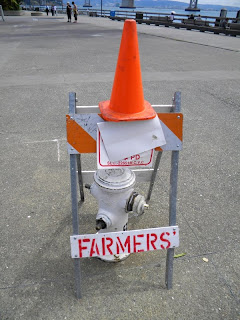Mbale Hill, Part II
A number of small villages line the only road that spans the top of the mesa. Most of them, consisting of no more than four or five little shops and some scattered homes, were just waking up when we strolled through. The men, already on African time while the women cooked and did their family’s laundry, were perhaps devising possible excuses they would tell their coworkers as reason for his delay that morning; standing around in shady spots talking. Children too young or from families too poor to send them to school were also out, playing together along the roadside, stopping mid-wrestle to stare at the passing white men with sweat pouring off of their faces. Once the shock of seeing us wore off, they would of course yell “bazungu” and, to our surprise, jambo, a Swahili greeting. Pre-Widowmaker we had been very enthusiastic with our responses to their calls. Slowly, as this hard stretch of road kept disappearing around bends in front of us, our replies to the children became more and more disappointing. No more waving back or trying to make goofy noises, just a grumbled “jambo” in between the swearing under our breaths. Breakfast had been an afterthought that morning, summiting and post hike beers being the real priorities, but you know that you are really hungry when you dream of eating local Ugandan food.
The Widowmaker persisted. For over an hour and a half we slogged through the equatorial sun at the top of Nkokonjeru with just under a liter of water and a half a PB&J sandwich between the three of us. We passed by a gorgeous waterfall, right by the roadside, but I was too tired to stop and do the whole picture routine. Punishment was lifted briefly, however, when a homeless guy decided to exchange his usual diversion, probably huffing glue and annoying locals, for harassing us for money. So we walked faster, but he kept up right alongside us. When he realized we weren’t in the mood to talk to our grandmothers nonetheless him, he began naming off types of food. At first this only agitated me, but, perhaps seeing the humor in the situation, I began to rattle off food with him. He absolutely loved this. Eventually “maize” was dropped and we all started laughing, our lethargic chuckles with his hoarse bellow, so we decided to name him Mr. Maize. Mr. Maize peeled off when we ran out of types of food to say or he spotted another collection of potential harassees, I can’t really recall which, but we should have thanked him before he parted; his initial panhandling proved to be a plus because it pushed us to walk faster than our tired legs had been willing to take us before we met him, and our destination was near.
Not the ration I had envisioned: three hours hiking up and twenty minutes of relaxing at the summit. Yes, the views were spectacular. Foreboding cumulus clouds dominated the skies to the north but halted right above us to be replaced by some more gentle stratus clouds. Below us lay Mbale and environs; the town proper was quite small, but civilization spread out like spilt water on a tile floor, very low and decreasing in density with each passing kilometer, until Mbale was reduced to long tentacles of houses and shops lining the major highways leading to other parts of Uganda. Metal roofs, usually unattractive from ground level, caught the midday sun and shone like jewels from a sea of green foliage. Behind us lay the Kenyan border and barely visible Tororo Rock, swathed in haze. A breeze moved past us, cooing us off despite the heat and carrying away the annoying buzz produced by the radio tower. Alas, it is the bane of the young adult male’s existence that yearnings of the stomach should take precedence over pleasant views, so, after snapping a few final photos, we headed back in the direction of civilization and nourishment.
During our descent we passed through a small town that had been rather sleepy during our first trip through, but now was alive with commerce and freshly released from school children. Ignoring their parents’ demands to get started on their homework, the kids began following us. Soon we had a gaggle of screaming and laughing African children following us down the mountain side, absorbing more excited kids with every house we walked by.























